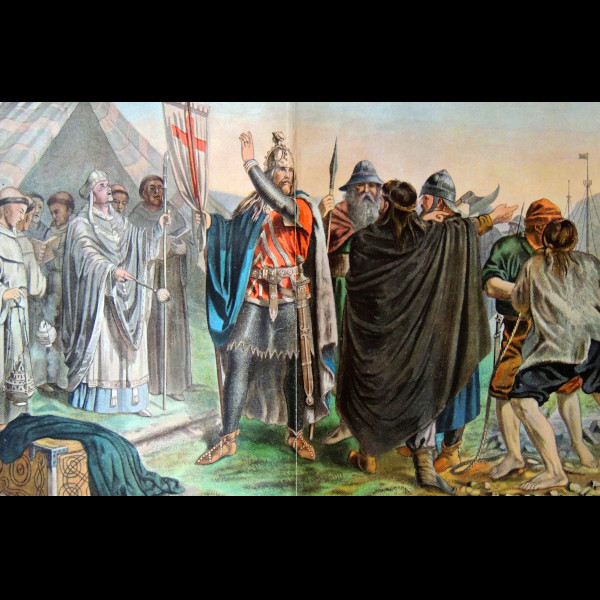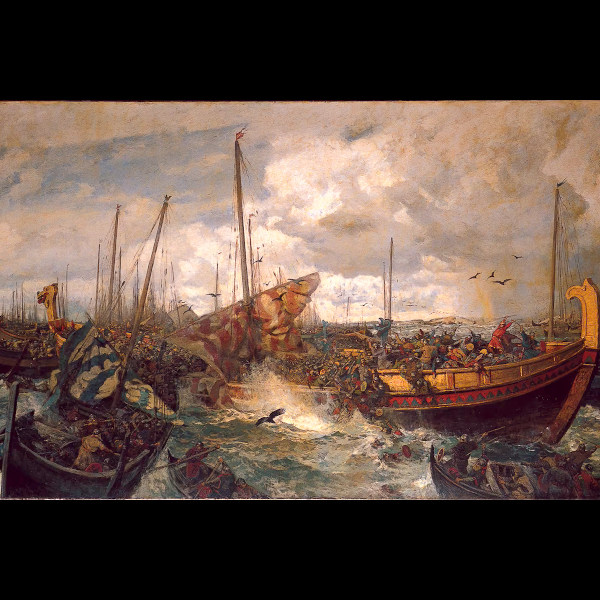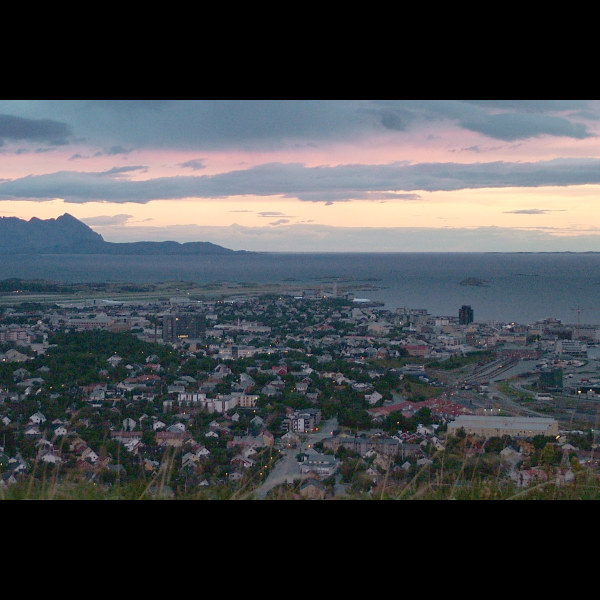DNA spotlight
Saga of King Olav Tryggvason

The area around Bodø in Norway is mentioned in the Saga of King Olav Tryggvason - the great grandson of King Harald I Fairhair. In 991 he joined raids on England - that year English King Aethelred II the Unready sued for peace agreeing to pay large sums of tribute. Olav invaded again in 994 with Danish King Sweyn I Forkbeard. Already having become a Christian, Olav was confirmed in 994 in Hampshire with Aethelred becoming his godfather. The next year the Norwegian King Haakon the Great died and Olav became the new king. He forcefully began imposing Christianity on his realm having success in Shteland, Faroe, the Orkney Islands, Iceland and Greenland. However Norway itself was a challenge and resisted.

Olav Tryggvason travelled to Bodø to christen Raud the Strong, a pagan priest and seafaring warrior who was strongly opposed to Christianity. Raud the Strong was a Norse priest and landowner who had built a beautiful longship with a dragons head carved into its bow nicknamed The Dragon. Olav defeated Raud in a sea battle and chased him to the Godey Isles where Olav gave an ultimatum that if Raud accepted a Christian baptism he could keep his lands and ship. Raud refused the King and met a gruesome end - Raud was bound to a beam of wood with his face pointed upward. A drinking horn was placed in his mouth and a snake placed inside with a red-hot iron placed at the top forcing the snake into Raud's mouth and down his throat gnawing its way out.

Olav seized all of Rauds possessions and his men were all baptized. The precious ship The Dragon was handed over to the King and this is how the famous Viking ships got their distinctive shape. Later Olav founded the seat of government in Trondheim. Olav also baptized the famous explorer Leif Ericson who took a priest with him back to Greenland. Olav himself met his death in the Battle of Svolder in 1000 AD at the hands of Danish king Sweyn I, the Swedish king Olaf Skötkonung and Eric the Norwegian earl of Lade. After his death large portions of Norway fell to foreign rule. Strangely enough rumors persisted Olav somehow survived the battle and fled - there were sightings in Rome, Jerusalem and elsewhere in Europe for decades to come.

Two graves were found 20 meters apart about 70 meters from the beach on Bodø dating to the end of the 10th century. A young warrior was found buried with a Viking Petersen Y-type sword, a spearhead and a shield. The skeleton had a brownish color with very strong bones indicating a strong physical shape. The second grave was a rich female of about 35 years of age found with a miniature sword amulet, an antler comb, needle house and chest mounts of iron. Were these individuals part of the actual Saga of King Olav? Perhaps future research in the area will uncover more clues.
Sample: Viking Age Warrior Ronvik Nordland Norway
- Sample ID: VK515
- Year: 990 AD
- Sex: Male
- Location: 67.28,14.39
Sample: Viking Age Burial Ronvik Nordland Norway
- Sample ID: VK530
- Year: 1000 AD
- Sex: Female
- Location: 67.28,14.39
